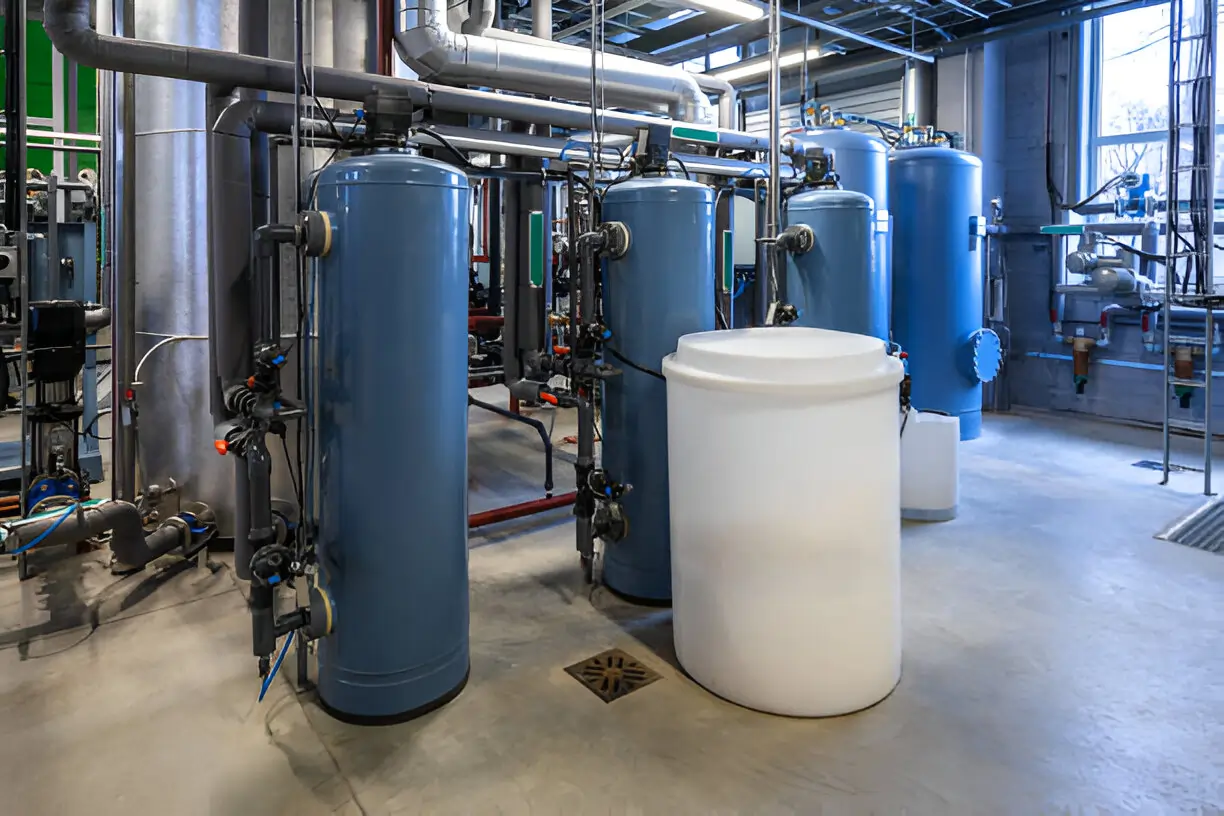Effective water chemistry management in industrial boilers ensures peak performance, equipment durability, and operational safety. Water impurities cause scale deposits, metal corrosion, and heat transfer losses, inflating energy costs and downtime risks. This guest post examines boiler water treatment strategies, emphasizing hardness control, alkalinity adjustment, and corrosion mitigation.
Why Boiler Water Chemistry Matters
Industrial boilers convert water into steam for power generation, process heating, or industrial cleaning. Untreated water carries calcium, magnesium, silica, and oxygen contaminants that form scale layers (up to 1.5 mm annually) or erode boiler surfaces, cutting efficiency by 8–12%. Balanced water chemistry maintains thermal conductivity and prevents tube failures. Routine boiler water testing tracks metrics like alkalinity, hardness, and dissolved solids, aligning with standards.
Visit Superior Plumbing & Heating site. They deliver specialized boiler maintenance, employing cutting-edge water conditioning to enhance commercial boiler efficiency. Proper water treatment sustains steam quality and minimizes repair expenses.
Critical Water Chemistry Parameters
- Ph Levels: Maintaining ph between 9.8 and 10.8 prevents acidic corrosion (below 9.5) or caustic gouging (above 11). Sodium carbonate (20–40 ppm) stabilizes alkalinity.
- Hardness: Calcium and magnesium ions create scale, reducing heat transfer by 15% per 0.8 mm deposit. Target hardness is below 0.5 ppm.
- Dissolved Oxygen: Levels above 0.005 mg/L cause pitting, shortening tube life by 7–12 years. Oxygen scavengers reduce levels to 5–10 ppb.
- Total Dissolved Solids (TDS): TDS above 3,000 ppm triggers foaming, degrading steam purity. Conductivity should stay below 3,200 µS/cm.
Hardness Control in Boilers
Hardness control eliminates scale-forming ions through ion-exchange softeners, substituting calcium and magnesium with sodium. Softeners cut scale buildup by 92%, preserving boiler efficiency. For instance, a 15-bar boiler with 150 ppm hard water forms 0.8 – 1.2 mm scale yearly, increasing fuel use by 4–6%. Demineralization via reverse osmosis (RO) reduces TDS to 5–20 ppm, which is critical for boilers above 40 bar. Softeners need biweekly regeneration (8–15 kg salt per cycle) and hardness checks (<0.5 ppm) to ensure performance.
Corrosion Mitigation Strategies
Preventing boiler corrosion requires oxygen removal and surface protection. Hydrazine alternatives like DEHA (10–30 ppm) lower dissolved oxygen to below seven ppb, curbing pitting in alloy steel tubes. Volatile amines (e.g., cyclohexylamine) elevate condensate ph to 8.8–9.3, shielding return lines from CO2-induced corrosion. Polymeric dispersants form a 0.005–0.015 mm barrier on metal, slashing corrosion rates by 75%. Monthly testing for iron and copper confirms corrosion control efficacy.
In addition to optimizing water chemistry for industrial boilers, it’s crucial to ensure that all plumbing systems are maintained to prevent any potential issues that could affect boiler performance. Regular inspections and maintenance by professionals can help identify and resolve problems before they escalate. For those seeking expert assistance, Family Tradition Plumbing and Heating, LLC offers comprehensive services that ensure your systems are running efficiently. Their expertise in handling complex plumbing and heating systems can be invaluable in maintaining the overall health of your industrial operations, ensuring that your boilers and related systems function optimally.
Chemical Dosing Techniques
Boiler water treatment systems deploy targeted chemicals to combat scale, corrosion, and carryover. Polyacrylate dispersants (5–10 ppm) prevent 90% of silica scaling. Defoamers like silicone-based agents reduce foam by 98%, ensuring clean steam. Phosphate-based programs (20–50 ppm) precipitate hardness as removable sludge, extracted via blowdown (0.5–1.5% of boiler volume daily). All-volatile treatments (AVT) minimize solids in high-purity systems (>99.9% steam quality). Dosing pumps with ±0.1 ppm accuracy prevent overfeed, which can accelerate corrosion (e.g., > three ppm free EDTA).
Monitoring and Analytical Practices
Consistent boiler water monitoring maintains optimal chemistry. Daily checks include ph (9.8–10.8), alkalinity (100–200 ppm as Caco3), and oxygen scavenger residuals. Biweekly hardness tests verify softener function. Silica and TDS are measured monthly to prevent scaling or foaming. Automated conductivity controllers optimize blowdown, saving 15–25% water. Digital dashboards, like those used by Superior Plumbing and Heating, provide real-time analytics, reducing maintenance costs by 12–18%.
Scale Removal Techniques
Scale removal is necessary when deposits exceed 0.4 mm. Acid descaling with 3–7% citric acid at 55–65°C dissolves magnesium silicate, restoring 97% of thermal efficiency. The process takes 6–10 hours, followed by alkaline rinsing to neutralize residuals. High-pressure water jetting (1,500–2,500 PSI) aids mechanical scale removal in heavily fouled tubes (>1.5 mm). Descaling should occur every 18–24 months, based on feedwater quality and blowdown consistency.
Boosting Boiler Performance
Optimized water chemistry improves commercial boiler efficiency by 6–12%. Scale-free tubes maintain heat transfer, cutting fuel costs. Precise blowdown (0.5–1.5%) reduces energy losses. Low-TDS feedwater ensures steam purity, preventing valve erosion in process systems. Regular softener maintenance and chemical dosing extend boiler life by 8–14 years, per industry benchmarks.
Recommendations for Chemistry Optimization
To enhance steam boiler water quality and performance, adhere to these technical guidelines:
- Monitor daily metrics: Track ph, hardness, and DEHA (10–30 ppm) to prevent scaling and corrosion.
- Deploy softeners and RO: Achieve TDS below 50 ppm and hardness below 0.5 ppm for high-pressure units.
- Control chemical feed: Maintain phosphate at 20–50 ppm and avoid AVT overfeed (> two ppm volatiles).
- Optimize blowdown: Use 0.5–1.5% daily blowdown with conductivity controllers to minimize waste.
- Schedule descaling: Remove scale every 18–24 months using citric acid or jetting.
- Test condensate lines: Keep ph at 8.8–9.3 with amines to protect against CO2 corrosion.
- Leverage professional audits: Engage certified technicians for water treatment system reviews.
Conclusion
Optimizing water chemistry in industrial boilers mitigates scale, corrosion, and efficiency losses, ensuring reliable steam output. Hardness control, oxygen scavenging, and precise dosing are pivotal for system health. Regular monitoring and tailored treatments extend equipment lifespan and cut costs. Superior Plumbing and Heating offers expert solutions for advanced boiler water treatment systems, ensuring optimal performance in industrial applications. Strategic water management drives efficiency and durability. This article is for informational purposes only.
Read more: How Does the Glazing Type Affect the Security of Aluminium Doors and Windows?
